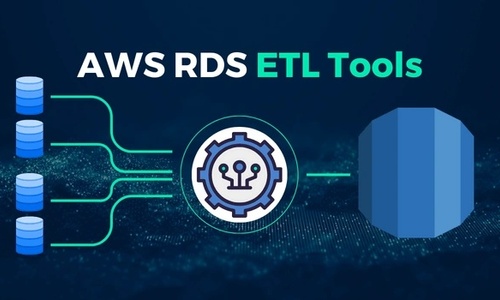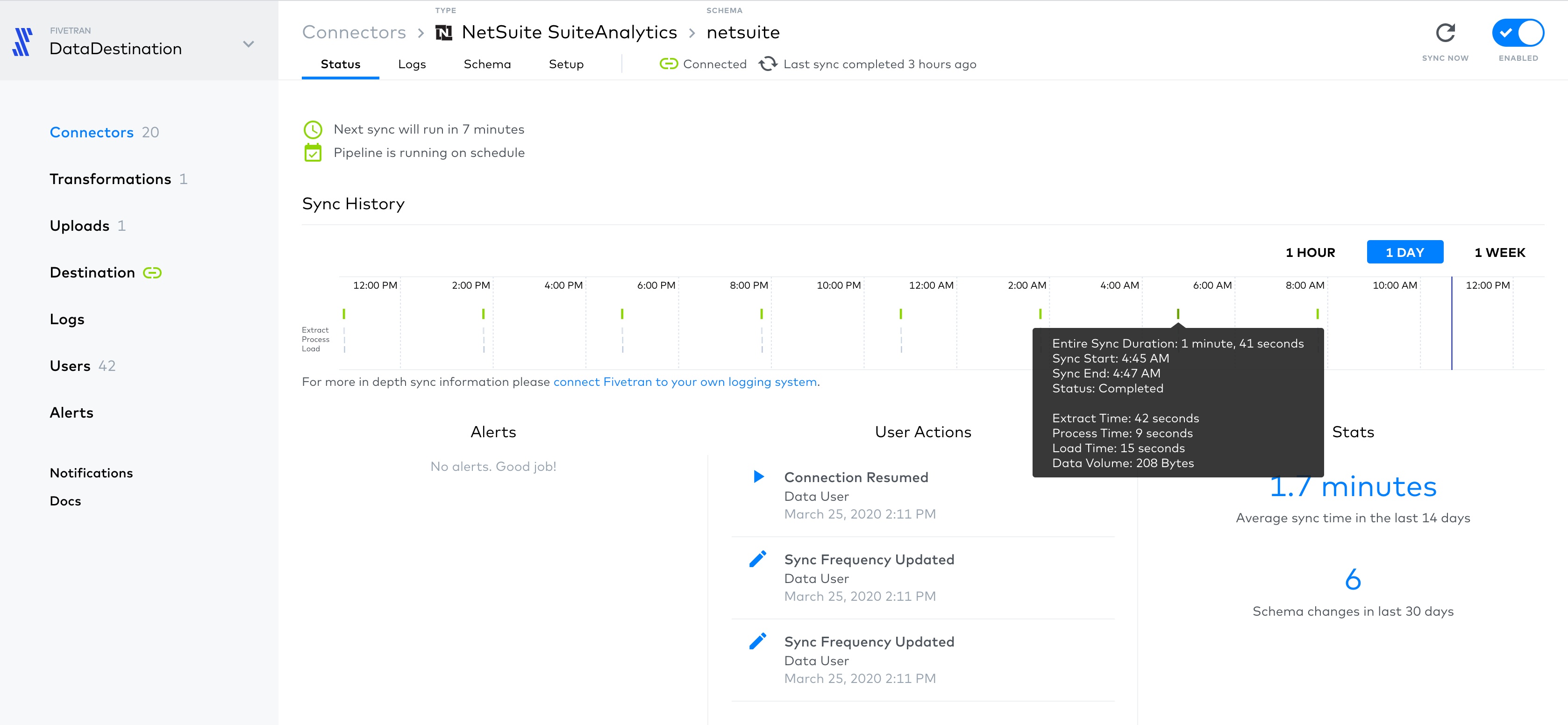Amazon's Relational Database Service (AWS RDS) is a web-based service launched by Amazon Web Services (AWS) that unifies the setup, operation, and scaling of relational databases in the cloud.
By using a dependable and feature-rich ETL (Extract, Transform, Load) tool, you can simplify the process of retrieving, transforming, and sending data from the various systems you already use, like AWS RDS.
Here are the top five things you need to know about AWS RDS ETL tools:
- Amazon’s Relational Database Service (AWS RDS) simplifies the setup, operation, and scaling of relational databases in the cloud.
- ETL tools help efficiently extract, transform, and load data into a target destination such as Amazon RDS.
- The best ETL tools offer an easy-to-use platform, user-friendly interface, pre-built integrations, and data transformation capabilities.
- Many AWS RDS ETL tools are available, including Integrate.io, AWS Glue, Talend, and a few others.
- Consider your current needs alongside potential future requirements to choose the right tool for your company.
Through this article, we explore the top AWS RDS ETL tools that can help you optimize your data integration processes.
What Is Amazon RDS?
AWS RDS is a fully managed, open-source cloud database that allows businesses to operate and scale relational databases for use in applications easily.
This service provides resizable capacity for industry-standard relational databases. It takes charge of tasks traditionally associated with database server management, supporting various types of database engines such as MySQL, PostgreSQL, MariaDB, Oracle, SQL Server, and Amazon Aurora.
What Are ETL Tools?
ETL tools are powerful software applications that streamline the process of extracting data from multiple sources, transforming it into a suitable format, and loading it into a target destination such as Amazon RDS.
These cloud-enabled tools offer data teams flexible and cost-effective ways to simplify data extraction, ingestion, and transformation processes.
ETL Use Cases for AWS RDS
Here are five real-world examples of ETL use cases for AWS RDS.
- Data Migration: ETL tools are used to migrate data from one system to another, making them ideal for transferring data from an on-premise database or a different cloud provider to AWS RDS.
- Data Warehousing: ETL tools can be utilized to extract data from various source systems, transform it into a suitable format for analytical queries, and load it into an AWS data warehousing solution like Amazon Redshift.
- Data Integration: ETL tools excel at pulling together data from diverse sources, transforming it into a consistent format, and loading it into a single database, making them perfect for data integration scenarios with AWS RDS.
- Data Transformation: ETL tools can extract data, transform it into a suitable format for analysis or application needs, and load the transformed data back into a database like AWS RDS or another appropriate data store.
- Data Replication: ETL tools are used to replicate data across different systems for redundancy or to serve different needs. For instance, you could replicate your production RDS database to a separate RDS instance for testing or reporting purposes.
How To Choose the Best AWS RDS ETL Tool?
When selecting an ETL tool for use with AWS RDS, evaluate your needs to understand what specific features and functionality you’ll need.
- Consider the following criteria when evaluating ETL tools:
- Ease of Use: The tool should be user-friendly and easy to configure and manage and provide comprehensive documentation and tutorials for seamless onboarding and troubleshooting.
- Integration with AWS RDS: The ETL tool should easily integrate with AWS RDS, meaning it should be able to connect to and work with the different database engines supported by RDS and other applications your business uses.
- Support: The provider of the ETL tool should offer reliable and responsive customer support. This could involve technical support, customer service, and a community of users for advice and best practices.
- Cost: Consider the overall cost of the ETL tool, including upfront expenses, ongoing fees, and potential charges for additional features or services.
- Scalability: The tool should address your current needs but must also meet your future needs, such as supporting new data sources, handling new types of transformations, and scaling to accommodate growing volumes of data.
While it’s essential for every ETL tool to meet these fundamental criteria, keep in mind that there are likely other factors to consider based on your specific business needs.
Here are five of the best AWS RDS ETL tools to consider.
AWS RDS ETL Tool Comparison
1. Integrate.Io
Rating: 4.3/5 (G2)
Key Features:
- 150+ built-in Integrations
- ETL & Reverse ETL
- ELT & CDC
- API management
Integrate.io is a cloud-based data integration platform that simplifies creating and managing data pipelines from multiple sources.
Integrate.io has one of the most user-friendly, drag-and-drop interfaces out of all the ETL tools on this list, making it accessible to almost anyone within a matter of minutes.
Integrate.io streamlines the ETL process with AWS RDS, enabling smooth data integration from RDS and other datasets. It efficiently handles data transformation and securely stores the processed data back in RDS for comprehensive analysis.
Pricing:
Integrate.io pricing is tailored exactly to each client's needs and requirements with a usage-based component couple with features and functionality. Clients choose which level of platform usage they will require and then which features and functionality to create a custom plan to fit their use case.
Bottom Line:
Integrate.io is an excellent choice for any size business that needs enterprise-grade ETL features packaged in an easy-to-use way. The platform comes with pre-built integrations, making it easy for companies to connect the tools they already use today. Whether you’re a large company looking for advanced features or just getting started with data pipelines, Integrate.io is flexible and powerful enough to meet your needs.
2. AWS Glue:
Rating: 4.2/5 (G2)
Key Features:
- Unified interface
- Serverless data integration
- AWS ecosystem compatibility
- Data cataloging
AWS Glue is a serverless SQL database provided by Amazon that streamlines ETL tasks. AWS Glue is used to discover, clean, expand, and move data between data warehouses.
Since AWS Glue is serverless, no infrastructure or maintenance costs are associated with using the tool. When creating a data warehouse or data lake, you must catalog the data in AWS Glue using AWS Glue Catalog. When creating and monitoring ETL tasks, the information in the Data Catalog is used, making it easily searchable and queryable.
Pricing:
AWS Glue is billed on a per-usage basis, so the more you use the tool, the higher the costs. You pay an hourly rate for discovering, processing, and loading data. You then pay a monthly fee for storing and accessing the metadata in AWS Glue Catalog. The first million objects stored are free.
Bottom Line:
AWS Glue only has 70 pre-existing data sources that you can connect to, making it less functional if you use multiple different tools. AWS Glue is a great solution if you’re an existing AWS customer and are predominantly using AWS services or if you need a fully managed ETL solution.
3. AWS Data Pipeline
Rating: 4.1/5 (G2)
Key Features
- ETL
- Predefined templates and configurations for many AWS databases
- Fault-tolerant architecture
AWS Data Pipeline is a web service that lets users create, automate, and manage data pipeline workflows. The service makes ETL tasks simple to perform by offering preconfigured templates and configurations.
AWS Data Pipeline runs on set intervals and streamlines moving data between different AWS services as well as on-premise data sources like AmazonS3, Amazon DynamoDB, and Amazon EMR.
Pricing:
You can use AWS Data Pipeline for free on AWS’s free usage tier. Paid tiers are billed on a per-usage basis, and the cost depends on whether your pipeline is running on AWS or on-premise and at what frequency.
Bottom Line:
Similar to AWS Glue, if you’re only using AWS services or if all of your data is housed on-premises, then AWS Data Pipeline is a good tool for you. If your data is stored in other locations or if you need a solution that will have more predictable pricing, other tools on this list may suit your needs better.
4. Talend
Rating: 4.0/5 (G2)
Key features:
- AWS-validated Redshift and Aurora partner
- 80+ AWS-specific connectors
- ETL/ELT
- Open-source platform
Talend is an open-source ETL tool that offers various pre-built connectors and data integration capabilities that work on-premises, in the cloud, or hybrid.
Talend automates and simplifies loading data into AWS RDS and includes more than 80 native connectors and components specifically for AWS. The company supports various data integration scenarios, including batch processing, real-time integration, and big data integration.
Pricing:
Since Talend is open source, you can use the Talend Open Studio for free. Pricing for Talend Data Fabric, their complete data integration solution, isn't published, but some reviewers state the platform is costly.
Bottom Line:
Talend is a good choice for businesses looking for a robust and comprehensive ETL tool that integrates well with various data sources. While it offers a wide range of features, it can be complex to use for beginners, reducing the barrier to entry for non-technical users.
5. Fivetran
Rating: 4.2/5 (G2)
Key Features:
- 300+ built-in connectors
- ETL & CDC
- Data normalization
- Logging and reporting capabilities
Fivetran is a cloud-based ETL solution that includes a wide range of pre-built data sources with the ability to add your own custom integrations. Fivetran caters to a more technical audience, allowing developers to create cloud functions to manage schema from sources like AWS, Microsoft Azure, and Google Cloud Platform.
Since Fivetran has over 300 built-in connectors, the platform facilitates seamless data transfer from various sources and datasets, making it a good fit for companies that use multiple systems in their data management workflows.
Pricing:
Fivetran bills on a consumption model but offers a free plan limited to 500,000 monthly active rows. The three paid plans come with a 14-day free trial.
Bottom Line:
While Fivetran stands out as a powerful and customizable ETL solution, they cater to a more technical audience, making it more difficult for non-technical users to manage their own data pipelines. If you have the budget and the technical resources, Fivetran is a compelling choice. It’s worth noting that Fivetran doesn’t transform data before it’s sent to a data warehouse, potentially leading to issues arising within your data workflow process.
Getting Started with AWS RDS ETL Tools
Choosing the right ETL tool that aligns with your current needs while being able to support your long-term goals is critical.
Here are some best practices to help you get started with AWS RDS ETL tools:
- Define Your Requirements: Identity your data integration needs, considering aspects like current system requirements, required integrations, and your team’s technical skills.
- Analyze Key Features: Evaluate ETL tools to ensure they meet your base needs. Important features include user-friendly interfaces, no-code/low-code capabilities, and automation.
- Pricing and Support: Choose a tool with clear, manageable pricing, taking into account your future consumption to the best of your ability. Inquire about customer support options and check if the company has detailed documentation.
- Use Free Trials: Take the opportunity to explore a platform's capabilities, evaluate its user-friendliness, and get feedback from your team by utilizing free trials.
Connect AWS RDS Simply With Integrate.io
Integrate.io is a powerful and easy-to-use ETL solution designed to provide enterprise-level features.
The platform easily integrates with AWS RDS and hundreds of other connectors to help you create, manage, and automate advanced data pipelines. Try out Integrate.io for yourself to see how it can help you with your data management needs.



















